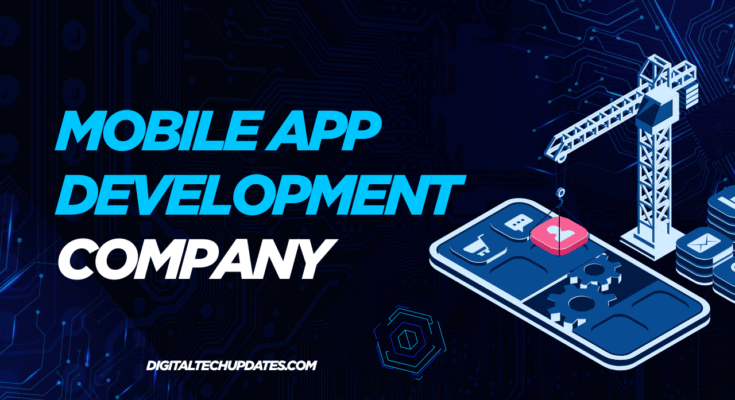What if your startup runs out of budget before your app even goes live? That’s a really scary thought, but unfortunately, it’s also the reality for many new businesses.
One of the top reasons startups fail is overspending early. According to Eximius Ventures, 38% of startups shut down because of poor budgeting, and app development is usually one of the biggest costs.
But the truth is that making a solid app for your business doesn’t have to drain your funds. By hiring an affordable mobile app development company, you can launch your app, reach your users, and expand your start-up without breaking the bank.
In this guide, we’ll break down how startups can build smart and cost-effective apps by partnering with the right team. Whether you’re based in Texas or anywhere else, even a mobile app development company in Dallas can deliver big results. Yes, at a price that fits your startup budget.
Let’s dive in!
How to Choose the Right Affordable Mobile App Development Company
Picking the right team is more important than picking the cheapest mobile app dev company. Thinking about affordability is only natural. But to create a fully functional app for your start-up, you need a partner who truly understands your startup goals. Here’s what to look for:
What “Affordable” App Development Really Means
Affordable app development doesn’t mean just choosing the cheapest option available in the market. What it does mean, though, is being smart about how you are spending your allocated app budget. Think of it like grocery shopping on a budget: you still need quality, but you’re strategic about what you get. It’s all about building a great app without overspending, so you can save money for other important things like marketing, support, and growth.
Affordable mobile app development company devs focus on:
- Delivering a functional and reliable app without unnecessary extras
- Cutting costs without cutting corners
- Helping you grow while staying within budget
Pick the Right Way For Your Start-up App
This means choosing the right tech stack. This will have a direct effect on how much you’ll spend and how fast your app gets built. It also decides how easily your app can grow in the future. Let’s talk about the top three options:
Native Development
If you want an app for your starup that has the best performance and features that deeply connect with iOS or Android, native development is the way. But it takes more time and money, because you’re basically building two apps from scratch.
- Great for complex or performance-heavy apps
- Best user experience on each platform
- Higher cost and longer timelines
Hybrid Development
Hybrid apps use one set of code for both Android and iOS. They’re quicker and cheaper to build, especially for simple to medium apps.
- Ideal for startups wanting to go live quickly
- Cost-effective compared to native apps
- Supported by tools like Flutter or React Native
No-Code/Low-Code Platforms
This is perfect for MVPs and early-stage apps. These tools let you build apps without deep coding knowledge.
- Tools like Glide or Bubble are user-friendly
- Great for testing app ideas fast
- Affordable for startups and solo founders
Why Startups Should Care About Affordability?
As a startup, it’s no surprise that your budget is tight. So obviously, you will spend wisely and make sure every dollar of your limited budget makes your business grow. That’s where affordable mobile app development comes in. It helps you launch your biz app quickly and cost-effectively.
Here’s why it matters:
- You can test your idea fast and collect real feedback
- Save money for marketing, operations, or hiring
- You don’t risk everything on one version of your app
Start with a Minimum Viable Product
When you build an MVP, you only include the most important features needed for your app to work. This keeps your costs low. It also gives you time to understand what your users really want before you include more features in your app.
Why making MVP first is an intelligent decision:
- Faster launch and lower dev costs
- Easier to improve later based on real feedback
- Let’s you test user response before adding any more features
Use Free Tools That Save Your Time and Budget
Open-source tools are just like free building blocks. They are trustworthy and save you a lot of time from building everything from scratch. These tools help developers work faster and smarter.
What are the pros of using open-source tools?
- Saves time and money with pre-built components
- Use trusted tools like React Native or Flutter
- Build apps that scale without heavy costs
Keep Your Design Clean and Simple
Your app doesn’t need to look like a Hollywood movie set. A clean and simple design will help people use your mobile app easily. It also keeps development time short. Moreover, simple app designs are seen to have more users than the complicated apps.
Tips to keep your business app simple:
- Use templates and UI kits to save design time
- Focus on what users need to do, not flashy animations
- Make sure it works well before making it fancy
Test Early, Test Often
Testing isn’t just something you do at the end. It should be done ideally throughout the process. By doing this, you catch bugs early, and it also keeps you from wasting money on broken features. After launch, you can keep improving based on what users say.
Make testing and feedback a habit by:
- Using feedback from real users to make smart updates
- Asking users what they like or find confusing
- Testing small parts of your app before adding new ones
Why Buy Servers? Use the Cloud
Buying your own servers can be super expensive. Honestly, you don’t need to. Cloud platforms like AWS, Azure, and Google Cloud let you host your app without spending a ton on hardware.
This means:
- No big spending on servers or maintenance
- Easily upgrade as your app grows
- Comes with built-in security and performance tools
Build Only What You Really Need
Having 50+ features doesn’t make your app better. Especially when you’re just a start-up. Right now, your focus should be on what your users really need right now. You can add more features later.
Here’s a good way to plan features:
- Include only the important ones for launch
- Don’t add advanced things like AI unless you really need them
- Add new features as more people start using your app
Watch Your Budget While You Are Building
Keeping track of your spending is just as important as choosing how to build your app. Make sure you track costs from design to launch so you don’t go over budget.
To stay on budget, you can:
- Set clear spending limits before you start
- Talk openly with your dev team
- Adjust your plan when needed to keep on track
Final Thoughts
Startups often make the mistake of spending too much, especially on app development. But spending all your start-up budget on the wrong dev team can leave you with a buggy app and no users. That’s why working with an affordable mobile app development company matters.
If you’re just starting out, choose a mobile app development company Dallas that understands tight timelines, lean budgets, and how to build apps that actually get used.




